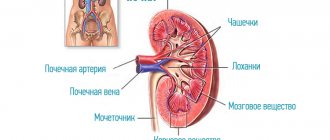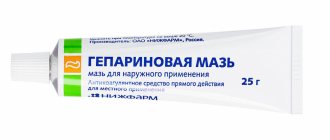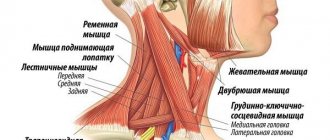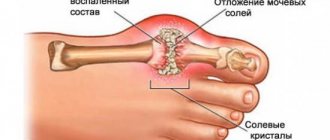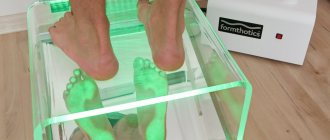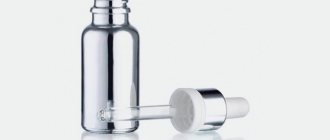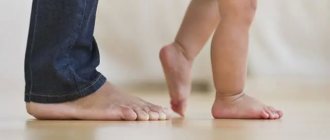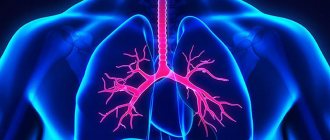Morning swelling of the face is the norm, associated with slow processes in the inner subcutaneous layers during relaxation. Such swelling occurs in everyone and becomes more noticeable with age. Conditions of a non-pathological nature are rapid passage and low intensity of “swelling” of facial tissues.
In other cases, regular swelling (at any time of the day) is a reason to consult a specialist. You need to start with a therapist, he will determine the type of edema and refer you to the right doctor. As for the first question (type of syndrome), it is useful for the patient himself to understand this.
Why does the face swell?
Physiological reasons
In the absence of allergies, intoxication and chronic diseases of internal organs, the symptom may be associated with constant lack of sleep, adherence to strict diets, and fasting.
In some cases, swelling of soft tissues is caused by improper selection of decorative cosmetics and skin care products. Puffiness can occur after crying, or be observed against the background of chronic stressful situations. Sometimes morning swelling of the face is explained by sleeping on a pillow that is too high, since the non-physiological position of the head provokes a narrowing of the cervical vessels. Other possible causes of puffiness in the morning include eating salty, fried foods, or drinking large amounts of liquid in the evening.
Hormonal changes in women
Cyclical fluctuations in hormone levels in women are not a disease, but a normal condition. However, such fluctuations sometimes cause facial swelling. In some women, this symptom is part of premenstrual syndrome. The symptom often appears during pregnancy and is caused by impaired renal function or physiological changes in the body. Many patients complain of facial pastiness during menopause.
Endocrine diseases
Swelling of the face is observed with persistent deficiency of thyroid hormones. The following forms of hypothyroidism cause the development of symptoms:
- congenital hypothyroidism;
- hypothyroidism during pregnancy;
- peripheral hypothyroidism;
- hypothyroid phase of autoimmune thyroiditis;
- the final stage of cytokine-induced thyropathy.
The symptom is observed constantly, combined with a yellowish or peachy skin tone, dry and brittle hair, and slowed mental processes. It is most severely manifested in myxedema - due to pronounced mucous edema of the skin and subcutaneous tissue, facial features become coarser, the chin enlarges, the palpebral fissures narrow, facial expressions become poor, and the face takes on a mask-like appearance.
Facial swelling
Allergic reactions
Allergic swelling of the face develops acutely due to contact with certain substances: medications, food products, pollen, animal hair. It is observed with insect bites and cold allergies. There are several allergic reactions accompanied by the appearance of this symptom:
- Hives.
Swelling is combined with rashes, hyperemia, and skin itching. - Contact dermatitis.
Swelling and hyperemia appear in the area of contact with the allergen, giving way to the formation of papules, which open, forming erosions. - Atopic dermatitis.
Develops in early childhood and is manifested by edema and erythema, against which blisters appear. - Bronchial asthma.
Puffiness of the face is detected during an attack, combined with breathing problems and forced body position.
The most severe forms of allergies, accompanied by swelling of the face, are acute allergic reactions - Quincke's edema and anaphylactic shock. With Quincke's edema, the contours of the face change over the course of several minutes, less often - several hours. The symptom is pronounced, especially in the middle and lower parts of the face, and persists for 2-3 days. Quincke's edema can develop independently or occur at stage 2 of anaphylactic shock, accompanied by swelling of the respiratory tract.
Kidney diseases
Watery, soft, mobile swelling of the face after a night's sleep, combined with a yellowish tint to the skin, is characteristic of kidney disease. The following pathologies are the cause:
- Glomerulonephritis.
In the acute form of the disease, edema persists for 2-3 weeks; when the process becomes chronic, it appears during periods of exacerbation. - Amyloidosis of the kidneys.
The symptom occurs in stage 2 (proteinuric) and progresses as renal function deteriorates. - Membranous nephropathy.
Develops after drug therapy, treatment of oncological pathologies, acute infections. It occurs in waves with episodes of complete or almost complete disappearance of edema. - Lesions in systemic pathologies
. Facial edema is detected in diabetic nephropathy and SLE. Appear against the background of symptoms of the underlying disease. - Chronic renal failure.
Swelling increases gradually over several years.
Diseases of the cardiovascular system
In diseases of the blood vessels and heart, edema is more pronounced in the area of the lower extremities, but can also be detected on the face, especially in the evening. They differ from renal edema in their higher density, decreased local temperature and bluish tint of the skin, slower formation and resorption. Caused by the development of chronic heart failure, detected in the following diseases:
- cardiomyopathy;
- cardiosclerosis;
- amyloidosis;
- constrictive pericarditis;
- some arrhythmias;
- heart defects;
- heart damage due to rheumatism;
- arterial hypertension.
Poisoning and intoxication
In people who smoke, morning puffiness of the face is more pronounced than in non-smokers due to the negative impact of toxins on the condition of the lymphatic system. Episodic swelling of the face can occur the morning after consuming large amounts of alcohol, especially noticeable when drinking beer or impaired renal function.
In patients with alcoholism, swelling becomes constant, the face takes on a characteristic appearance, and the skin is often yellowish or with a purplish tint. Edema is aggravated with the development of alcoholic nephropathy. In addition, swelling of the face and body can be observed when substances that have a nephrotoxic effect are absorbed, for example, in case of vinegar poisoning.
Other reasons
Minor swelling is quite typical for the manifestation of acute respiratory diseases; it is more pronounced in children, but can be detected in people of any age. The appearance of soft tissue swelling is possible with ENT pathologies: sinusitis, frontal sinusitis, tonsillitis. Facial swelling is accompanied by some hypo- and hypervitaminosis.
Physiological causes of edema in women
Women have their own gender-specific causes of edema. Most often they are associated with changes in hormonal levels.
- Critical days,
- Pregnancy,
- Menopause.
All these reasons are related to the work of progesterone. It becomes active after ovulation. Its goal is to maintain the pregnancy, even if it does not occur. During such periods, you need to carefully monitor your diet and mood to minimize swelling.
With age, the activity of estrogen decreases, which seems to oppose progesterone. Therefore, women over 45 years of age are more likely to experience edema. Moreover, not only the face suffers, but also the legs, which experience constant stress, and the hands.
Diagnostics
At the initial stage, patients with swelling on the face often go to therapists, who, depending on the clinical picture, diagnose themselves or refer patients to other specialists: allergists, endocrinologists, nephrologists, etc. To establish a diagnosis, the following methods are used:
- Questioning, external examination
. The doctor finds out the circumstances, frequency and time of swelling, the dynamics of changes during the day, throughout the menstrual cycle. Evaluates the severity and extent of edema, skin temperature, and tissue density. - Lab tests
. During laboratory tests, signs of inflammation are identified, kidney function is studied, and hormone levels are determined. According to indications, tests are done to identify allergies. - Ultrasound methods
. Taking into account the characteristics of clinical symptoms, ultrasound of the kidneys, thyroid gland, echocardiography, and other types of sonography are prescribed. - Other visualization techniques
. To clarify the diagnosis and detail pathological changes, CT and MRI, including those with contrast, can be used.
Skincare treatments help get rid of morning puffiness of the face
How to quickly relieve facial swelling at home
Swelling can be removed using very simple methods at home.
Contrast wash
- alternately wash your face with cold and warm water. This procedure refreshes, tones and improves skin color. Be sure to try it! There's no need for any preparation or extra expenses - just open the tap and adjust the temperature.
Massage
- improves blood flow and lymph movement. You can even do a massage using your hands (hands are the best tool to always have with you). Watch the video and repeat simple exercises to get rid of swelling.
- Use your fists to walk along the side and back surfaces of the neck (do not touch the front surface of the neck), moving from top to bottom from the jaw to the collarbones.
- Press your chin from below with your fist, and lower your head to meet the fist.
- Use the back of your hand to rub your chin with pressure.
- Between two fingers folded into the Victoria sign, three ears up and down.
- Place your palms tightly with the edges towards your nose and press your thumbs to your chin. Slowly, without lifting the ribs from the skin, open your palms and, as it were, squeeze everything out of your face towards your ears.
- Using your fingertips, run over the area under your eyes. This will not only remove swelling, but also save you from unsightly bags.
As a result, the skin should turn red and burn a little.
Treatment
Pre-hospital assistance
To eliminate the physiological causes of facial swelling, it is necessary to adjust the diet, normalize the daily routine, avoid stress, and select suitable cosmetic preparations. Mild allergic edema in the absence of signs of breathing difficulties and the presence of a previously established diagnosis can be eliminated with the help of antiallergic drugs.
In other cases, self-medication is not recommended. It should be borne in mind that self-administration of diuretics can lead to the development of serious side effects and disorders of the body.
Specialized treatment
Many patients require adjustments to their diet and eating regimen. The tactics of conservative treatment are determined by the etiology of the disease or condition that provoked facial swelling:
- Hormonal fluctuations in women
. Hormonal medications and sedatives are used. - Hypothyroidism
. Replacement therapy with levothyroxine is carried out. If there is a lack of iodine, iodine-containing medications are prescribed. - Allergic reactions
. Antihistamines and glucocorticosteroids are effective. In severe cases, resuscitation measures are necessary. - Kidney diseases
. For glomerulonephritis, antibacterial agents and drugs to correct immunity are indicated. For systemic diseases, treatment of the underlying pathology is required. In all cases, medications with symptomatic effects are used. - Diseases of the heart and blood vessels
. Cardiac glycosides, nitrates, vasodilators, B-blockers, anticoagulants, and drugs to improve cardiac muscle metabolism may be recommended. - Intoxication
. If edema is associated with smoking and drinking alcohol, the patient is advised to give up the bad habit and is given medicinal and non-medicinal treatment to eliminate the addiction. - Poisoning
. In some cases, gastric lavage is possible. Carry out detoxification measures.
For hypovitaminosis, vitamin preparations are prescribed, for acute infections, symptomatic therapy is carried out, for ENT diseases, antibiotics and symptomatic drugs are used, and sinus punctures are performed. Surgical treatment is rarely required. In case of heart defects, surgical correction is performed. Tonsillitis and sinusitis can be considered as indications for tonsillectomy, maxillary sinusotomy, and frontotomy.
Cosmetic procedures against puffiness in the morning
If you go to a cosmetologist with the problem of facial swelling, he will most likely recommend you a lymphatic drainage massage and a visit to the sauna.
But to get a massage with special cups, you don’t have to go to a specialist. Massage cups can be purchased here. By the way, they can be used in any zone. They not only help in the fight against edema, but also get rid of cellulite, wrinkles and make the body contours clearer.
Video instructions for those who want to do everything right.
View this post on Instagram
Post from Annette (Anna Melnikova) (@melannett)
Tips and tricks for preventing edema
To prevent swelling, you need to take care of your health every day.
- Try to eat right and avoid foods that retain fluid.
- Drink enough water.
- Do a facial massage. The Guasha Heart massager is very helpful in preventing edema. It improves blood circulation, relaxes muscles and speeds up the elimination of toxins. Beauty 365 has a good option. They also have an amber massager. He does his job just as well.
- Play sports. An active lifestyle helps you stay healthy and full of energy.
- Get enough sleep! Good sleep has a beneficial effect on the functioning of the entire body.
- Use high-quality night cosmetics that are specially selected for your skin type.
- Breathing exercises stimulate lymph flow through the work of the diaphragm.
- Visit a sauna or bathhouse. This is simply the best thing we can do for our lymphatic system.
At the “Flourish” marathon there is a whole block that is dedicated to cleansing the body and lymph separately. The most effective but gentle methods that are suitable for everyone and are absolutely safe. And cleansing is necessary for those who suffer from edema (and not only). Also in the marathon: Comprehensive work on rejuvenation, healing and transformation of the entire body - from hair to fingertips. Within a week of the marathon you will notice great changes.
Question answer
Despite the fact that alcohol is an excellent diuretic (provokes increased urine production), alcohol abuse disrupts normal metabolism and causes hypovolemia, i.e., a decrease in circulating blood volume. The breakdown products of alcoholic beverages thicken the blood. There is a lack of fluid in the vessels, its pathological redistribution occurs, and edema appears.
If the cause of swelling is: teeth, injury, surgery, then heat should not be applied to the face. This can lead to a deterioration in health, dilation of blood vessels and an influx of fluid.
Gentle methods do not always show the desired result. It is in such a situation that plastic will help. Blepharoplasty is performed to remove bags in the eye area.
Relieve swelling with exercise and massage
A good helper in eliminating swelling and removing excess fluid is massage:
- Lightly pinching and stroking the skin, move along the lines running from the nose to the outer parts of the face.
- Then from the middle of the neck to its sides.
- Along the forehead from the top to the bridge of the nose and eyebrows, down from the eyes, from the nose to the temples.
This massage will help increase blood supply to the skin, which will speed up the removal of fluid and reduce swelling.
A set of specially selected physical exercises, which are recommended to include:
- stretching exercises;
- exercises for extension and flexion of arms and legs;
- rotational movements of the body, arms, legs, head;
- extension;
- sudden movements of arms and legs;
- tilts and turns.
There is also a system of exercises aimed at eliminating bags under the eyes.
Facebuilding
is a fairly new, increasingly popular procedure that helps eliminate various cosmetic facial defects. By doing the exercises regularly, in a couple of months you will forget about droopy eyelids and bags under your eyes.
- Rotate your eyes alternately left and right, keeping your head straight.
- Squeeze your eyes shut, then open your eyes sharply. Repeat 10 times.
- Close and open your eyes.
Read material on the topic: Face building for the face
